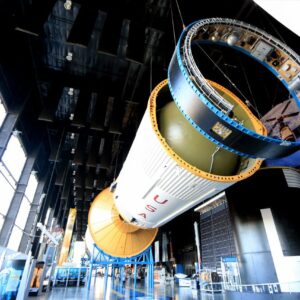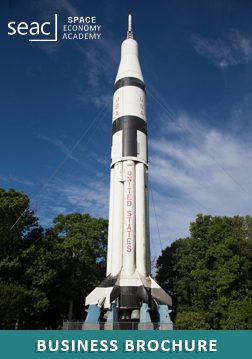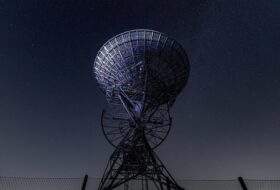Space Debris: A challenge for
humanity, a chance for cooperation.
Author: Andreu Gonzalez Armenteras.
We are witnessing the beginning of a new era for space exploration, yet we are still haunted
by its past. During the last years, we have seen an exponential increase in the number of
orbital launch attempts made from all over the world (Statista Research Department, 2023).
This is a trend that we had never seen before, not even during the height of the space race.
As the number of launches increases, so does the amount of objects sent into orbit, many of
which never make their way back to Earth. At first, these objects that we started to leave
behind were not a cause for concern, after all, space is so vast that the chances of future
launches to come across these remains were nearly impossible, at least that was the
consensus at first. But the amount of objects kept increasing. A trend that still continues to
this day. Fortunately, so did our understanding and awareness of the complex situation we
had gotten ourselves into. Suddenly, we were no longer dealing with what was left behind,
but rather, its aftermath. Millions of fragments of all sizes and shapes, accumulated and
created over the years. (ESA’s Space Debris Office, 2023) The threat of collision, once
inconceivable, had become a much more realistic scenario, not to mention the likelihood of
the cascade effect that could occur soon after, known as Kessler’s syndrome (Kessler &
Cour-Palais, 1978)
Where do we go from here? What can we do to remove these objects from our sky? The
answers to these questions are not trivial. To deal with space debris, we must look at the
issue from several angles, as there are many processes involved when it comes to
developing a project aimed to handle these remains. These projects usually involve
identification, characterization, tracking, mitigation or removal, each of these branches
deeply intertwined with one another and individually carrying along their own complexity. The
solution to our problem lies somewhere in this complex web of actors and processes and the
sooner we start to untangle it, the clearer the path forward will be.
Space belongs to everyone, and in order to ensure that this remains being the case for the
foreseeable future, the need for international cooperation and transparency also play a key
role. We need to find a way for all the nations of the world, regardless of their spacefaring
capabilities, to pledge their support against the threat posed by space debris and to do so,
we must present them with a viable and tangible solution, one that ideally starts to yield
results before it is even enacted in the first place. This global policy must also be just in
nature, as we must take into consideration that not all nations have the same capabilities
and as such, are less likely to agree to a document that would hinder their access to space
in this new era, even if it meant contributing to cleaner orbital space for all. Affordable,
non-restrictive mitigation technologies must be made available and implemented alongside
these new set of laws and policies in order to gather as much cooperation and support as
possible.
But what can be done about the fragments unaffected by space debris mitigation policies?
Objects which follow only the laws of physics? The ones that will take too long to naturally
deorbit? Right now, it is safe to say that we are working on it, as several active debris
removal technologies and missions are proposed, discussed and tested every year. For
example, in 2018, the RemoveDebris mission, led by the University of Surrey and several
other institutions not only managed to successfully demonstrate net and harpoon
technologies in orbit, as it also highlighted the importance of collaboration between
institutions, companies and people from all fields and backgrounds. (Aglietti et al., 2019)
Additionally, on the 18th of february of 2024, the ADRAS-J mission launched into space with
the goal of characterising a derelict H2A rocket body that has been up there since 2009
(Astroscale Team, 2024) This mission is set to be followed by many others that share a
common end goal and the more data that is gathered by them, the closer we get to coming
up with a better, definitive solution. Only time, and plenty of research alongside it, will tell if
there is an all-encompassing technology to remove space debris or if the solution might be
to use different approaches depending on the characteristics and origin of the objects it aims
to remove. One thing is for certain, we cannot afford to remain idle.
It can be safely said that the space debris problem is here to stay for many decades as it is a
silent yet constant threat that we must deal with, specially considering that we know that
something can and must be done about it. It will not be easy, if it were, we would not be
talking about it, but as more and more people dare to take their first steps in this complex
and fascinating field, the combined efforts of people from all walks of life, all over the world,
make it so that the path forward becomes clearer.
REFERENCES:
Aglietti, G. S., Taylor, B., Fellowes, S., Salmon, T., & Retat, I. (2019, September 5). The
active space debris removal mission RemoveDebris. Part 2: In orbit operations. Acta
Astronautica, 168, 310-322. https://doi.org/10.1016/j.actaastro.2019.09.001
Astroscale Team. (2024, February 19). Astroscale Successfully Launches World’s First
Debris Inspection Spacecraft, ADRAS-J. Astroscale.
https://astroscale.com/astroscale-successfully-launches-worlds-first-debris-inspection
-spacecraft-adras-j/
ESA. (2020, October 12). ESA – The current state of space debris. European Space Agency.
https://www.esa.int/Space_Safety/Space_Debris/The_current_state_of_space_debris
ESA’s Space Debris Office. (2023, December 6). Space Environment Statistics · Space
Debris User Portal. Space Debris User Portal. Retrieved March 2, 2024, from
https://sdup.esoc.esa.int/discosweb/statistics/
Kessler, D. J., & Cour-Palais, B. G. (1978, June 1). Collision frequency of artificial satellites:
The creation of a debris belt. JOURNAL OF GEOPHYSICAL RESEARCH-SPACE
PHYSICS, 83(A6), 2637-2646. https://doi.org/10.1029/JA083iA06p02637
Statista Research Department. (2023, December 1). Total space launches worldwide 2022.
Statista. Retrieved March 2, 2024, from
https://www.statista.com/statistics/1343344/orbital-space-launches-global/




